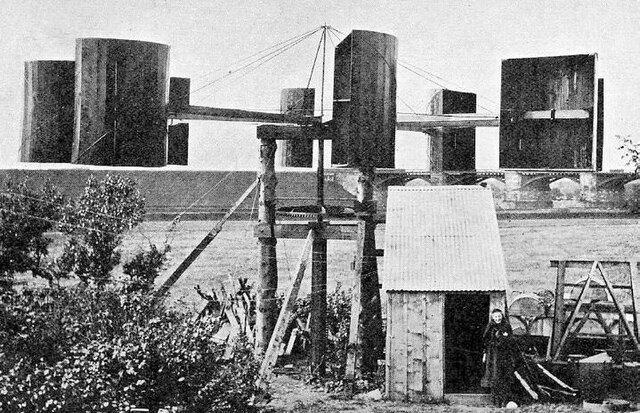A tidal stream generator, often referred to as a tidal energy converter (TEC), is a machine that extracts energy from moving masses of water, in particular tides, although the term is often used in reference to machines designed to extract energy from the run of a river or tidal estuarine sites. Certain types of these machines function very much like underwater wind turbines and are thus often referred to as tidal turbines. They were first conceived in the 1970s during the oil crisis.
Two types of Tidal Stream Generators Evopod - A semi-submerged floating approach tested in Strangford Lough with SeaGen in the background.
A 3D model of an Evopod tidal turbine
A wind turbine is a device that converts the kinetic energy of wind into electrical energy. As of 2020, hundreds of thousands of large turbines, in installations known as wind farms, were generating over 650 gigawatts of power, with 60 GW added each year. Wind turbines are an increasingly important source of intermittent renewable energy, and are used in many countries to lower energy costs and reduce reliance on fossil fuels. One study claimed that, as of 2009, wind had the "lowest relative greenhouse gas emissions, the least water consumption demands and the most favorable social impacts" compared to photovoltaic, hydro, geothermal, coal and gas energy sources.
Thorntonbank Wind Farm, using 5 MW turbines REpower 5M in the North Sea off the coast of Belgium
Nashtifan wind turbines in Sistan, Iran
Illustration of the wind turbine for power generation erected by Josef Friedlaender at the International Electrical Exhibition in Vienna in 1883
James Blyth's electricity-generating wind turbine, photographed in 1891






